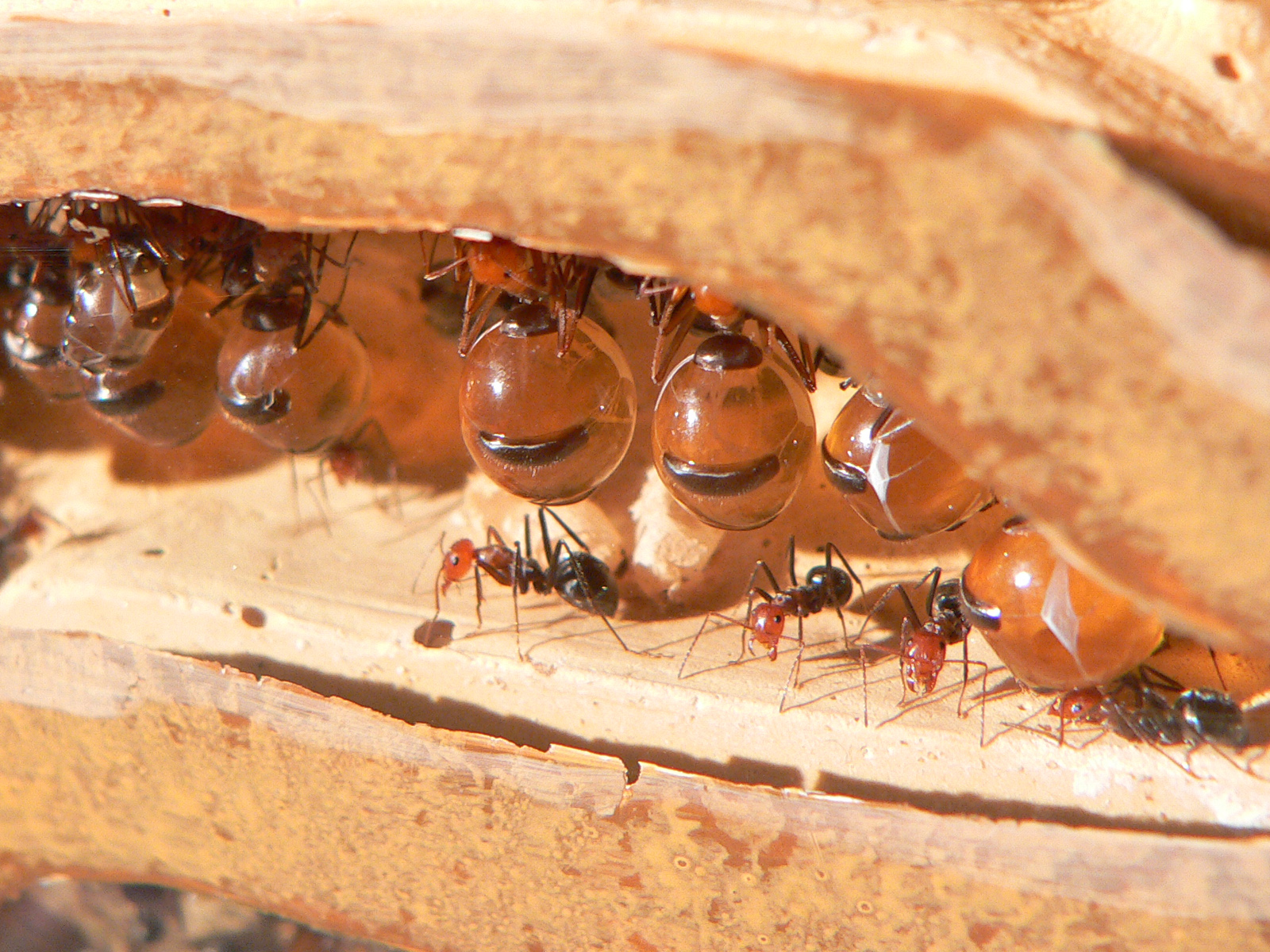- Honeypot ant
Taxobox

image_caption = Honeypot Ant
regnum =Animal ia
phylum =Arthropod a
classis =Insect a
ordo =Hymenoptera
familia = Formicidae
subfamilia =Formicinae
genus = MyrmecocystusHoneypot ants, also called honey ants or repletes, are
ant s which are gorged withfood by workers, to the point that theirabdomen s swell enormously, a condition calledplerergate . Other ants then extractnourishment from them. They function essentially as livinglarder s.Many insects, notably honey bees and some wasps, collect and store liquid for use at a later date. However, these insects store their food within their nest or in combs. Honey ants are unique in using their own bodies as living storage, but they have more function than just storing food. Some store liquids, body fat, and water from insect prey brought to them by worker ants.
These ants can live anywhere in the nest, but in the wild, they are found deep underground, literally imprisoned by their huge abdomens, swollen to the size of grapes. So valued in times of little food and water, occasionally raiders from other colonies, knowing of these living storehouses will attempt to steal these ants because of their high nutritional value and water content.
The insects are edible and form an occasional part of the diet of various Australian Aboriginal peoples.
Papunya , in Australia'sNorthern Territory is named after a honey ant creation story, orDreaming , which belongs to the people there, such as theWarlpiri . The name ofWestern Desert Art Movement ,Papunya Tula , means "honey ant dreaming".Myrmecocystus nests are found in a variety of arid or semi-arid environments. Some species live in extremely hot deserts, others reside in transitional habitats, and still other species can be found in woodlands where it is somewhat cool but still very dry for a large part of the year.
Further reading
*Crane , Eva. The World History of Beekeeping and Honey Hunting . 1999.
"Janeth Rios"10-07-2008 External links
* [http://www.myrmecos.net/formicinae/myrmecocystus.html Myrmecos.net: Gallery of Myrmecocystus honeypot ant images]
* [http://www.sasionline.org/antsfiles/pages/honeyants/honey.html Honey Ant Research Paper]
Wikimedia Foundation. 2010.
